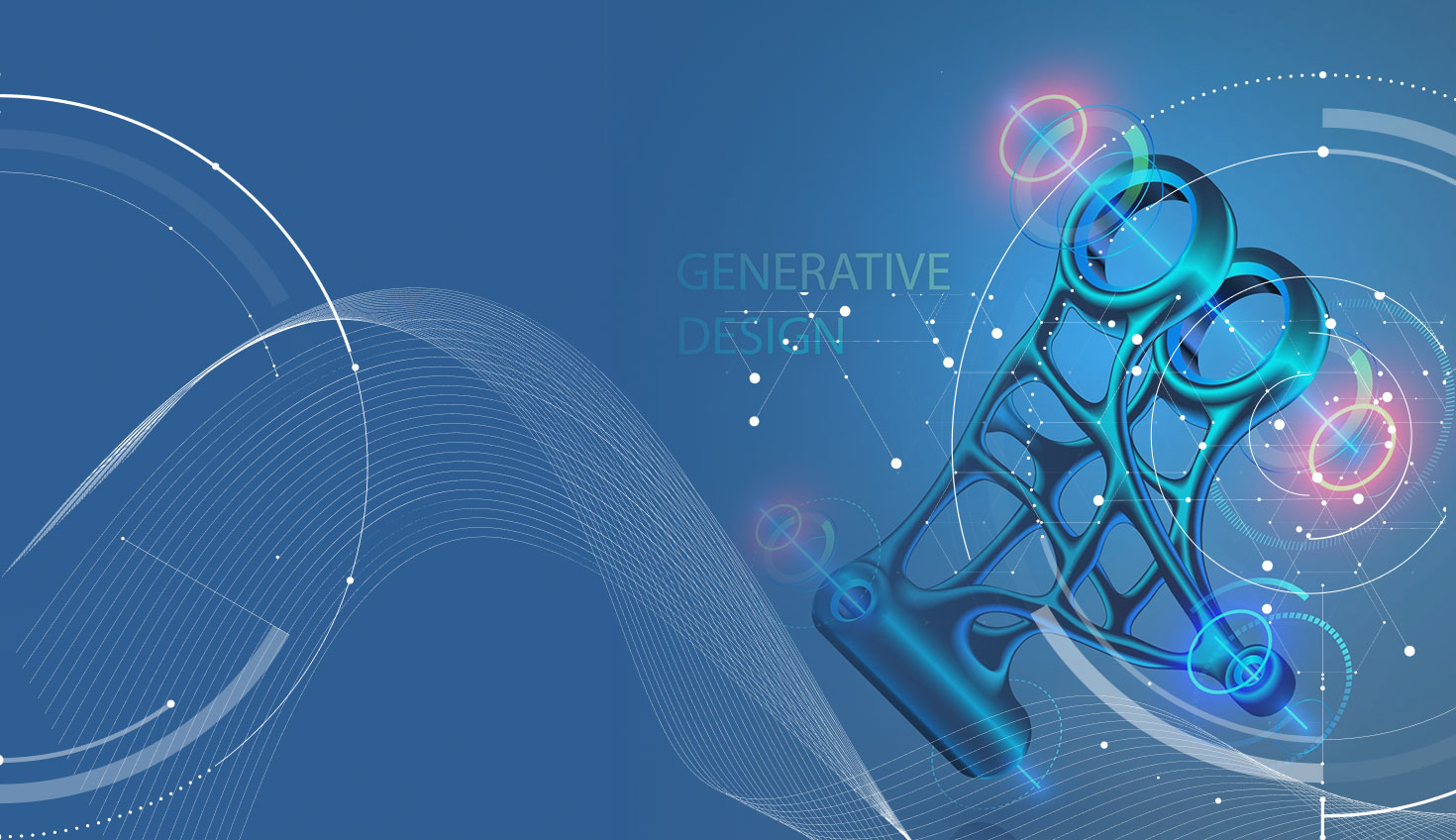In traditional CAD software, there are only so many ideas for a product design that a mechanical engineer can come up with. Most of them are unimaginative, which can lead to overbuilt, heavy, and cumbersome final products. This is where generative design steps in.
Generative design uses mathematical optimization, combined with finite element analysis (FEA) to automatically create optimal part geometries. It uses an engineer’s constraints, including loads and fixed geometries, as inputs, and creates hundreds of the lightest, strongest, and most intricate designs as an output. A single engineer simply could not conceive of these types of designs on his or her own. Not to mention this is all done with the click of a button.
The machined part pictured at the top of this blog was created through generative design. It required much less material to produce, yet retains the same (or more) structural strength than a part designed and manufactured with conventional methods.
Because of the unorthodox nature of generative designs, they have to be manufactured in a specialized way. Additive manufacturing and investment casting are often the only two options capable of producing the complex geometry generated by the algorithm. Additive manufacturing, also known as 3D printing, consists of applying layer by layer of material until the entire design is produced.
Whether using plastic, concrete, or metal, additive manufacturing is the foremost way these intricate designs are created. However, additive manufacturing can sometimes face speed-of-production challenges, making it more ideal for small-batch manufacturing versus mass production runs. It can also face repeatability problems, as every print does not always go like the last. Our other option, investment casting, consists of making a mold, pouring the metal into it, and then breaking it apart. The only big disadvantage of this is the high cost of short production runs. This is the reason why we mainly look at additive manufacturing for our generative designs.
With generative design technology, a thousand different solutions to a problem can be revealed to the engineer within a few minutes. Not only are there many different designs to choose from that could not have been imagined by the engineer, but they are also lighter and stronger. Therefore, using generative design is most effective when reducing the weight of the product is a top priority – an ongoing objective in the automotive and aerospace engineering fields. Simply having lighter parts can result in tremendous savings in fuel costs alone.
Generative design can give you the lightest product possible and still bear your loading conditions. The technology is being integrated into CAD platforms across the industry, with software improvements coming rapidly. Given its transformative nature, generative design could soon become one of the most valuable features in a CAD system.
